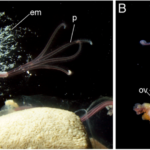![]() You may never heard of LSDG (although some of you may have heard of LSD but I make no judgement here) but a lot scientific thought and time is spent contemplating it. In fact Google Scholar returns 113,000 published papers on the subject. Why are there millions of pages dedicated to this subject? Because it is one of the most conspicuous and basic, albiet with exceptions, patterns on earth.
You may never heard of LSDG (although some of you may have heard of LSD but I make no judgement here) but a lot scientific thought and time is spent contemplating it. In fact Google Scholar returns 113,000 published papers on the subject. Why are there millions of pages dedicated to this subject? Because it is one of the most conspicuous and basic, albiet with exceptions, patterns on earth.
The pattern of high biodiversity in the tropics declining toward the poles, the latitudinal species diversity gradient (LSDG), is replicated among a remarkable variety of organisms. In an analysis and review by Hillebrand, LSDG were found to occur in marine, terrestrial, and freshwater ecosystems, and in both hemispheres. The strongest LSDG signals were found in bigger and more diverse taxa in marine or terrestrial habitats, as opposed to freshwater. However, the reasons for the existence of LSDG’s remain as varied as the organisms that exhibit this pattern. Some of the contenders are changes in food availability, climatic stability, climatic harshness, temperature, speciation rates, extinction rates, parasitism, predation, and competition which are all proposed to vary between the tropics and poles.
In 1993, my Ph.D. advisor Michael Rex documented for the first time LSDG’s in the deep sea. Mike and his coauthors found the recognizable elevation of diversity near the equator and depression near the poles among mollusks and crustaceans in the Atlantic Ocean. Later work, demonstrated that foraminifera also demonstrated the same pattern. This paper was seminal, and no I am not biased because Mike already gave me my Ph.D, for two reasons.
One, the results indicated that LSDG’s were probably not related to temperature. The deep sea varies little in temperature, ~4 degrees C, and not consistently with latitude to explain the observed LSDG’s. What does vary with latitude? The total amount and variability of production of plankton at the ocean’s surface. The sinking of this production at the surface is virtually the only source of food for deep-sea organisms. This lent support to an underlying mechanism of food availability. Second, this paper helped put to rest that the idea of a deep-sea buffered against climatic variability, implying rather an intrinsic link between the deep sea and the ocean’s surface. For me, this paper also serves as reminder that despite the many unique things about species in the deep oceans, they are constrained and operate under the same basic biological mechanisms as species in other habitats.
Recently, Yasuhara and colleagues added another very important component to our understanding of LSDG’s–temporal dynamics–uncovering a remarkable pattern that further links surface and deep. Utilizing a core from the ocean drilling program, Yasuhara et al. probe the history of minute crustaceans, the ostracods, over the last 500,000 years in the tropical deep sea. The last half-million years saw four glacial-interglacial climatic cycles that radically altered the temperature, plankton production, and currents of the oceans. Diversity of ostracods in the deep tropical ocean plummeted during glacial periods, and thus removing an LSDG. Conversely during interglacial periods, ostracods became fantastically rich in diversity. Thus climatic forcing drives the presence and absence of deep-sea LSDG’s. This instability of the deep-sea LSDG reflecting climatic variation also points to the sensitivity of these deep habitats to anthropogenic climate change.
Rex, M., Stuart, C., Hessler, R., Allen, J., Sanders, H., & Wilson, G. (1993). Global-scale latitudinal patterns of species diversity in the deep-sea benthos Nature, 365 (6447), 636-639 DOI: 10.1038/365636a0
Hillebrand, H. (2004). On the Generality of the Latitudinal Diversity Gradient The American Naturalist, 163 (2), 192-211 DOI: 10.1086/381004
Yasuhara, M., Hunt, G., Cronin, T., & Okahashi, H. (2009). Temporal latitudinal-gradient dynamics and tropical instability of deep-sea species diversity Proceedings of the National Academy of Sciences, 106 (51), 21717-21720 DOI: 10.1073/pnas.0910935106






“One, the results indicated that LSDG’s were probably not related to temperature. The deep sea varies little in temperature, ~4 degrees C”
How’s that?
Not being a biologist i may be missing something, but isn’t the deep sea influenced by life above it as well?
I’d think that the more life you have falling down into the deep sea at a certain area, the more life said area in the deep sea can maintain,
so while the temperatures in the deep sea itself may remain more or less the same, the temperatures in the ecosystems above it vary and therefore support diverse life to different degrees, and influence deep-sea life accordingly.
whoops, never mind. that should teach me to post before i read an entire article through. :P